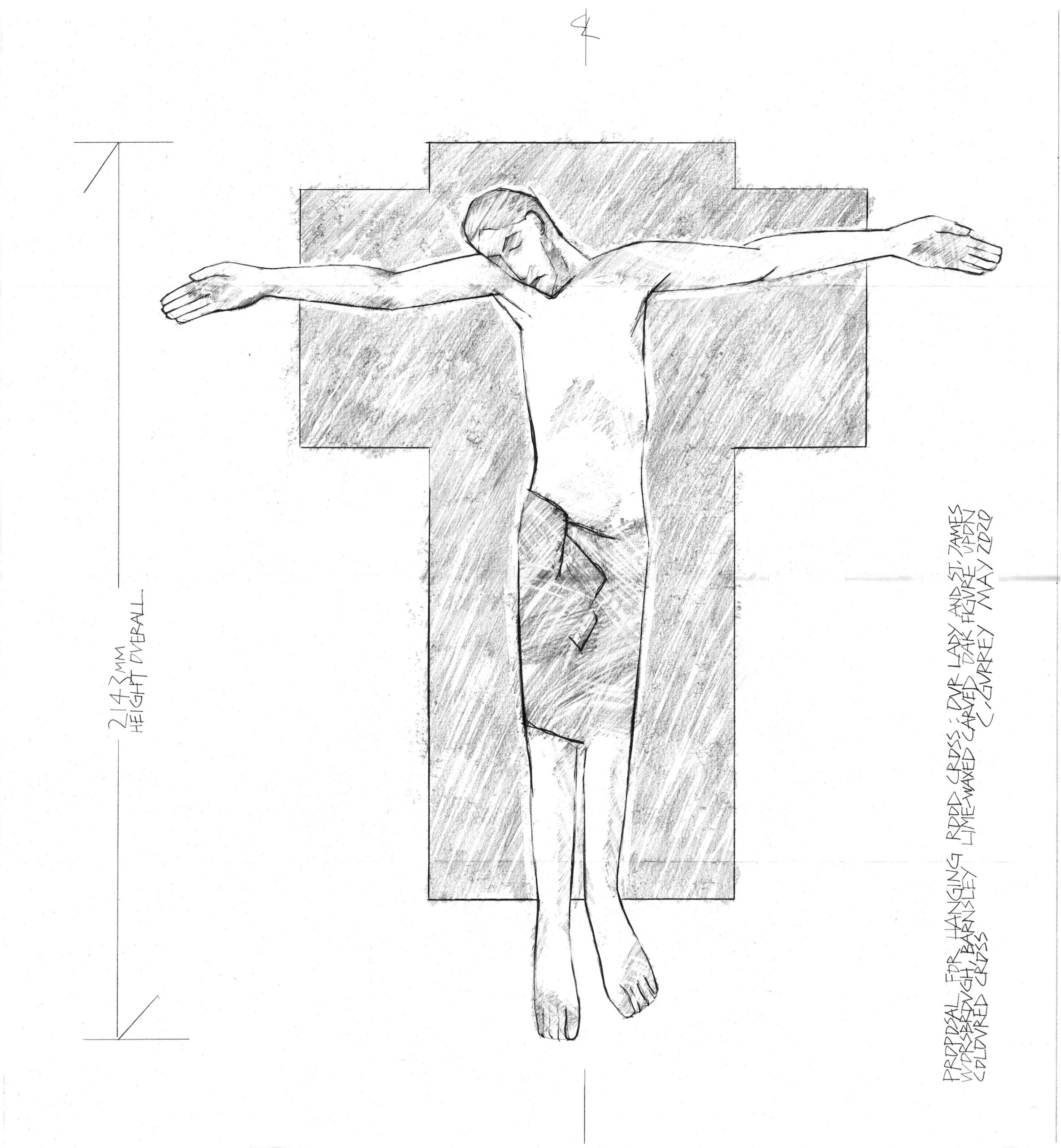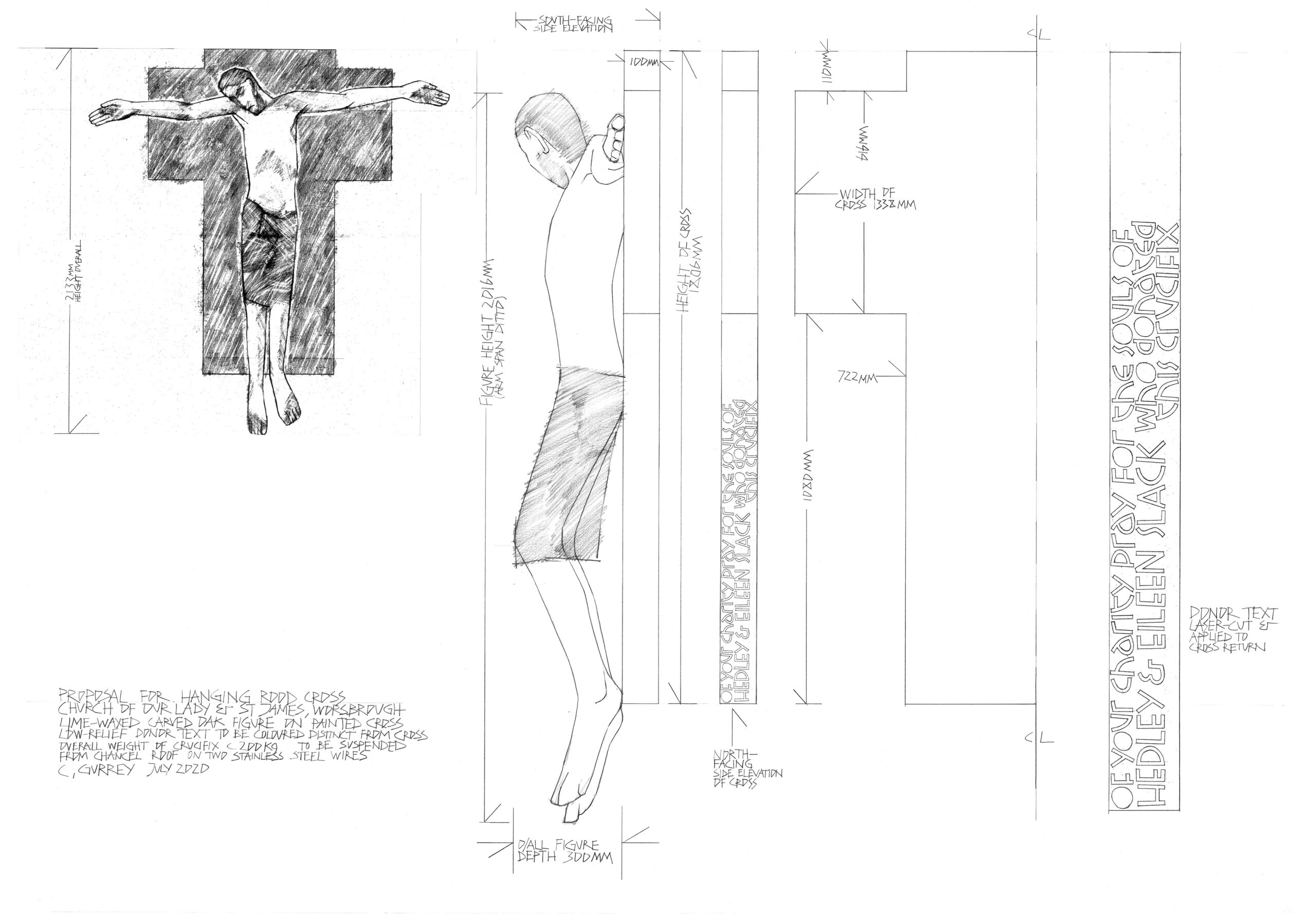Hanging Rood Cross
The proposed Hanging Rood Cross has been designed by Charles Gurrey, an architectural sculptor whose work broadly covers three areas: sculpture on buildings or in spaces defined by buildings; ecclesiastical work; and a broad range of work with text, developing the sculptural aspect of lettering. Further details and examples of his work can be seen on his website www.charlesgurrey.com
After university Charles undertook a five-year apprenticeship in carving and sculpture. Twenty-six years ago he became self-employed in order to both design and make work that had a strong sense of its material qualities.
In 2004 he completed a commission for the West Front of Guildford Cathedral, comprising nine figures in relief, with carved panels and sculpted text. Other work has included: a commemorative monument at Bletchley Park; figurative and lettering work as well as liturgical furniture in a number of English cathedrals; public art commissions in England and Wales, and occasional work made for exhibition when invited to do so.
Charles describes the ideas behind the Hanging Rood Cross for Our Lady’s as follows:
I wanted to make a modern crucifix, but one that people at Worsbrough would be receptive to. There is no sense of a Baroque or Victorian naturalistic figure of Christ, where the pain and psychology of suffering may be the key. This is a figure that is balanced between fate and grace, and maybe recalls something of the restraint and gentleness of very early 11th or 12th century representations.
The corpus would be carved oak; not overly-defined but left with an expressive surface showing the chisel marks throughout. This would be finished with lime wax, to lighten the tone of the wood, except in areas around the hair/beard and the longish loincloth.
This figure is then seen against a broad cross form, finished to a suitable matt-painted colour.
An inscription for the donor would be set in very shallow relief (but slight contrast of colour to the cross) on the lower return section of the cross.
The Rood is then to be suspended on stainless steel wires from the roof of the chancel, above the altar.


